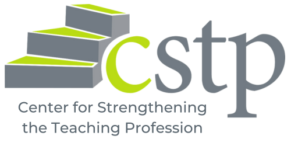CSTP’s Expertise:
- Washington State Site Director for NBPTS Improvement Teams, 2014-2018
- Improvement Lead and HUB for Network Improvement Community Grants, 2017-2018
- Improvement Science Micro-Credential Author for National Education Association, May 2018
- Improvement Science Symposium Presenter, WA Educational Research Association, 2019
- Carnegie Presenter and Participant, 2018 and 2019
- Northwest Educational Service District – 8 District Collaborative Focused on Special Education and General Education PLC Practices, 2019
What is Improvement Science:
Improvement science is a framework born out of the healthcare field for making change in systems using an inquiry model of plan, do, study, act. It is based on the idea that the learning journey is where knowledge and change that results in real improvement are found. It highlights that the real practitioners are those who can see what works, for whom, and under what circumstances. The Carnegie Foundation for the Advancement of Teaching has based their work with improvement science in the educational system on six core principles.
Why Improvement Science:
CSTP has seen the power of Improvement Science application in our work with educators and educational systems. Improvement Science is an important tool because it addresses many of the factors that inhibit real change in our system. It focuses on the “users” — the humans we serve, students, teachers, and other educators. It allows educators to plan and implement small changes, learn from mistakes and try again instead of assuming fundamental flaws and starting all over again. It allows for measurement of improvement and change and not just measurement as an accountability piece. It also highlights a networked approach in which teachers learn from other teachers and exponentially increase their capacity for growth over time. All in all, it makes sense to educators and can be applied through variations in teams, problems, contexts and many other factors we face. It bring educators together to study and learn, but not judge one another, and its ultimate goal is make the system better that serves our students and communities every day.
Utilizing Improvement Science:
Small tests of change have become common practice for us here at CSTP. Here are some examples of the ways in which we’ve utilized Improvement Science in our work with educators.
Teacher Leadership Capacity-Building and Goal-Setting
Every summer we offer a series of professional learning opportunities we call Camp CSTP. During this week-long retreat, we integrate CSTP’s Teacher Leadership Framework (add link) with improvement science principles. We have found that participants have great success at creating and achieving their goals and making long lasting change when they use the plan, do, study, act, cycle. The idea of being able to make small iterative changes, that celebrate not only successes but what we learn from the challenges that we face helps to build the confidence, growth mindset, resilience and capacity of our teacher leaders.
“My experience at the Teacher Leadership Training was very enlightening. I am a bit new to PLCs and Teacher Leadership, so attending both days (Leading With Equity and Setting the Stage for High Functioning PLCs) were very helpful. In particular, using the ideas around adult learning as a tool to understand the challenges of leadership was especially eye opening.” – High School Teacher
In a beautiful, serene, setting, CSTP added wonderful, useful tools to my “box” to improve the efficacy and efficiency of my PLC’s.” – Elementary Teacher
Selah School District
In the Selah School District we used Improvement Science and small tests of change to help school teams focus on teacher leadership development and engagement strategies to help close the achievement gap and inequities found in their district. The teams were able to use small tests of change to analyze district data and plan steps that started with teacher and adult interactions and resulted in real change in classrooms and for students.
Northwest ESD 189
In our work with the Northwest Educational Service District 189, we are building a network of school districts using an improvement science approach and small test of change focused on special education and students with disabilities. These trailblazing school teams, that have been identified for school improvement for outcomes of their students with disabilities, are completing plan, do, study, act inquiry cycles to test changes to their special education and general education instructional practices and PLC models. Teams are made up of special education teachers, general education teachers and administrators working collaboratively implement systems and instructional changes that will increase outcomes for student with disabilities.
“Interactive pieces/ dialogues with colleagues (in district and out!) ~ power points, and handouts ~ all in all one of my more favorite workshops. Good information – great data.”
“We decided our first small test was something to abandon and came up with a potentially “better” small test…I like the model of try it and revise it!
Upcoming Projects –
- College Spark Grant
